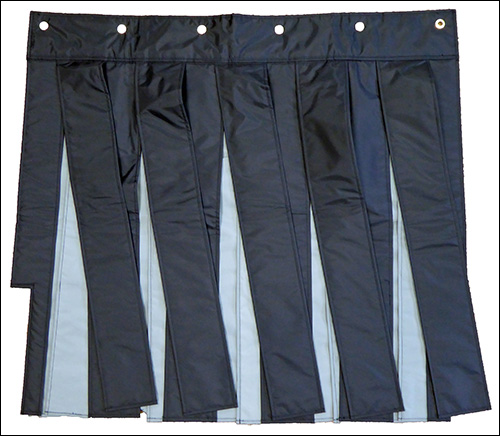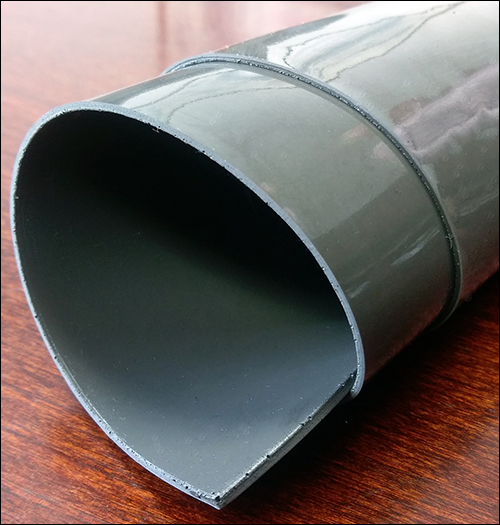Mar 15, 2016For the past four years, MWT Materials has been selling RF-absorbing curtains and pads to RFID technology users to boost the effectiveness of tag reads. In recent months, fish-processing solutions provider Marel, McCarran International Airport, in Las Vegas, and other businesses have installed these RF-isolating curtains to improve the reading of passive EPC Gen 2 ultrahigh-frequency (UHF) RFID tags.
Based in Passaic, N.J., MWT Materials (like its predecessor, Millimeter Wave Technology) has been providing RF-absorbing material to the U.S. Navy and other U.S. Department of Defense customers since the early 1990s. The Navy uses this material to absorb radar RF signals on some U.S. vessels. The company also manufactures RF-absorbing products for use with MRI machines (to enhance images), and for improving cell tower signals.

However, products that block radar signals can also be used to control the transmission of signals by RFID readers, according to Marc Grun, MWT Materials' sales and marketing director. So about four years ago, the company sold its first product for preventing stray reads of passive UHF RFID tags to McCarran International Airport, which used the curtains to improve the read efficiency of the UHF RFID reader tunnels that were part of the airport's existing baggage-handling system. During the past year, the airport has purchased additional curtains for use at its Terminal 3.
When luggage or other RFID-tagged objects pass down a conveyor, the problem of stray reads from tags at other locations within the vicinity can require users to "dial down" the reader signal, ensuring that only tags directly in front of the device capture and respond to its signal. But with a reader's transmission power decreased, a user typically needs to reduce conveyor speed in order to ensure that every tag is interrogated as it passes. The result is that reading tags can be a slower process, with lower read rates, than if the reader were set for a longer transmission range.
The airport had already installed several hundred of MWT Materials' RFID Portal Isolation Curtains (model MAC-9101), Grun says, at the entrance and exit to each reader tunnel, through which RFID-tagged baggage passes on its way to or from a flight. The curtains ensure that only the tags within the tunnel are read, he explains, and allows for increased line speed, thereby resulting in faster luggage delivery to passengers. During the past year, Grun reports, McCarran has purchased approximately 150 additional curtains for use at Terminal 3. (The airport's RFID system and installation provider did not respond to a request for comments.)
MWT Materials recently has added RF-absorbing tag pads (model MAS-310) to its RFID product line. These pads can be mounted around or behind a tag to enhance signal-to-noise ratios and prevent metal from interfering with tag reads, or to focus the read area to directly in front of the tag rather than the entire surrounding space.
The company's customers include RFID systems integrators and end users, Grun says, while at least one RFID antenna manufacturer is recommending that its customers use MWT Materials' products to ensure the effectiveness of their RFID system.

The RFID Portal Isolation Curtain has metal-infused material on the outside to reflect—and, therefore, block—transmissions from tags outside the reader tunnel. In addition, the curtain's interior includes a layer of RF-absorbing ink to stop transmissions from leaving the tunnel's confines.
Marel provides solutions for the fish-processing industry, including the equipment and software required to enable fish processors not only to process and ship their products, but also to gather food-quality data about the fish as it moves through the process—to ensure that it is fresh, for example (see RFID to Boost Quality and Yield at Fish-Processing Plants). The company's Seattle division, formerly known as Carnitech U.S., began offering RFID technology to its customers a few months ago, so that those companies could track when fish were offloaded from vessels, and when they were then processed, frozen and shipped.
Andy Cloyd, a Marel technician, says the RFID system is installed for one customer, a fish-processing plant in Kodiak, Alaska. When pollock, salmon, cod or other fish are brought in by vessel (a typical load is about 40 tons of fish), the catch is trimmed, cleaned and packed in plastic bags that hold 20 kilograms (44 pounds) apiece. Every bag is then tagged with an adhesive passive UHF RFID tag (Marel uses off-the-shelf tags and readers, Cloyd says, though he declines to name specific makes and models). Each tag's ID number is stored in the Marel software, along with data about the fish itself, the species, the date and the location where it was caught.
The bags are then transported to conveyors that move them to a freezer, where they are stored and covered with a paper layer. The bag tags are again read through that layer, in order to record when the fish has been frozen. When the bags are loaded onto trucks for transportation to retail stores, the tags are interrogated once more, creating a full history in the software of that product's movements. To date, Marel has installed 14 fixed Impinj Speedway Revolution RFID readers.
Reading tags on the fish bags, however, proved challenging on the conveyors, Cloyd says. The fish itself made it difficult to read the tags unless the reader was set for a long range, which created problems when the processing plant tried to interrogate tags on adjacent conveyors. To solve this problem, Marel began working with MWT Materials and installed RF-isolation curtains at six locations where RFID signals were potentially leaking beyond the conveyors. Marel's greatest challenge now, the company reports, is ensuring that the tags remain affixed to the plastic bags. The fish-processing plant attaches the tags to approximately 18,000 20-kilogram bags daily.
Other customers of MWT Materials are using the MAS-310 tag pads to absorb near-field reflection and better target transmission to an RFID reader antenna. The pad is installed like a gasket between the tag and the object (often composed of metal) to which that tag is attached.
The company is currently developing a new type of RFID isolation curtain with a built-in window through which individuals can see. For instance, some customers have indicated that, for safety purposes, they required a way for forklift drivers who needed to drive through the curtain to see what was on the other side. The window contains an RF-conductive net, similar to that of a microwave oven's window, that is transparent while also blocking RFID transmissions.
Additionally, MWT Materials offers RF-blocking paint and wallpaper to prevent the leakage of RFID signals in such locations as retail dressing rooms and isolated areas within warehouses.
Although other companies offer RF-absorbing products, Grun says, they tend to confuse customers with too many choices, not necessarily designed specifically for RFID. MWT Materials' curtains are more flexible than other products on the market he adds, he says, due to their proprietary materials.
MWT Materials will be displaying its new RFID Portal Isolation Curtain (the version with the built-in window), as well as its other products, at its booth (#848) at RFID Journal LIVE! 2016, being held in Orlando, Fla., on May 3-5.


